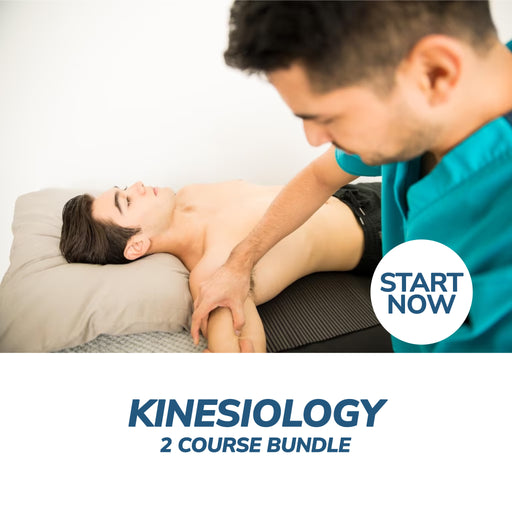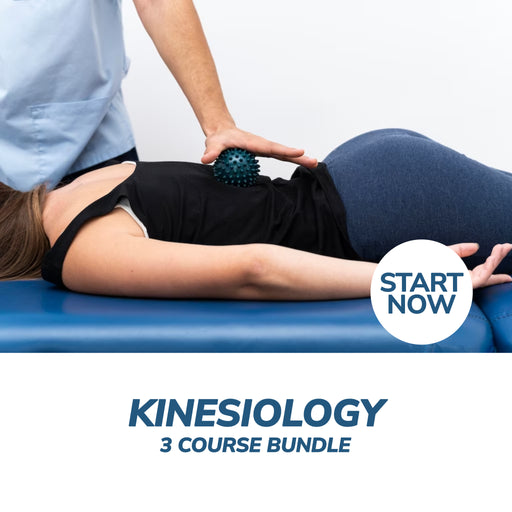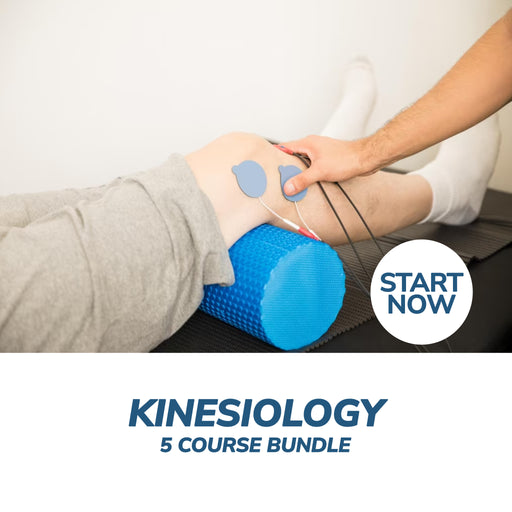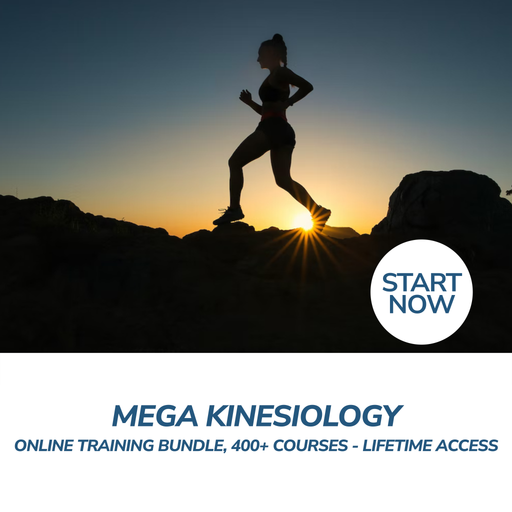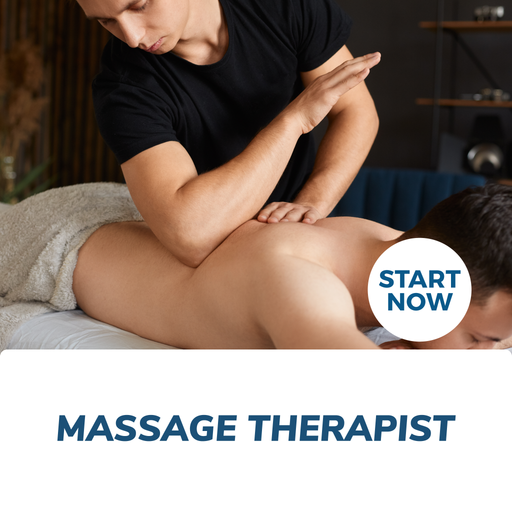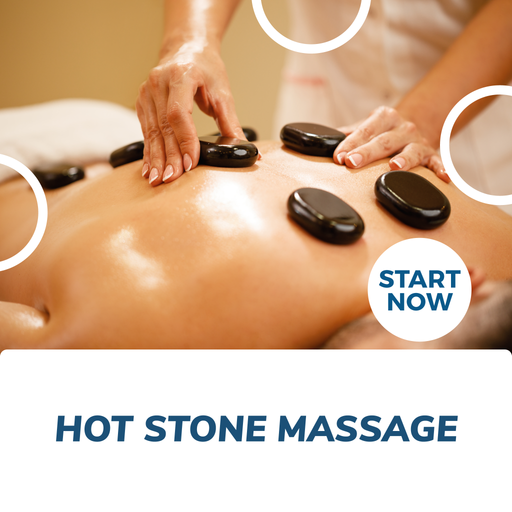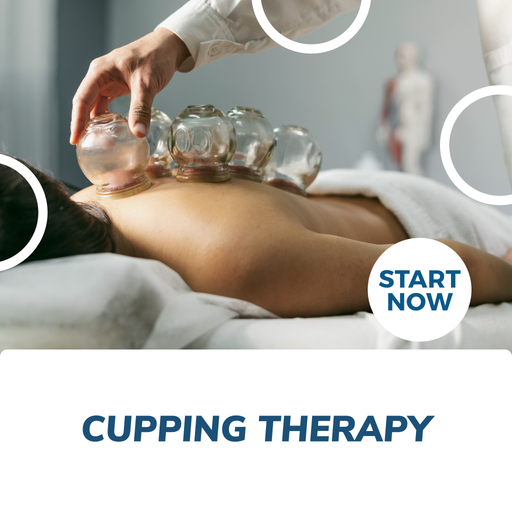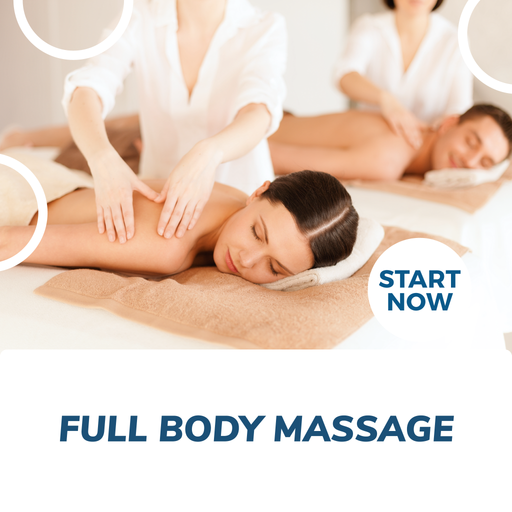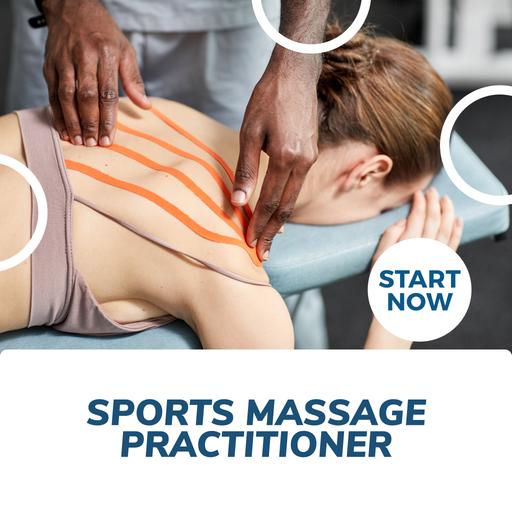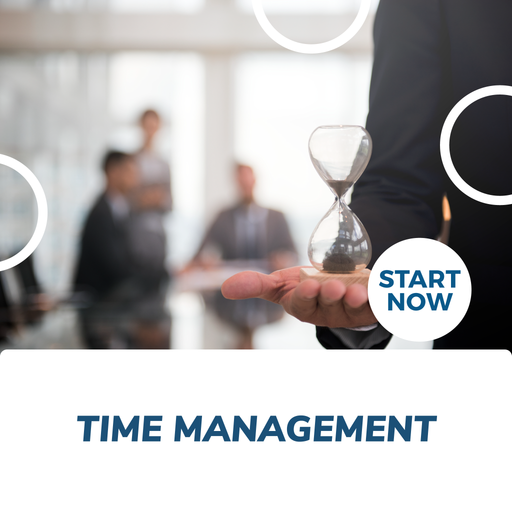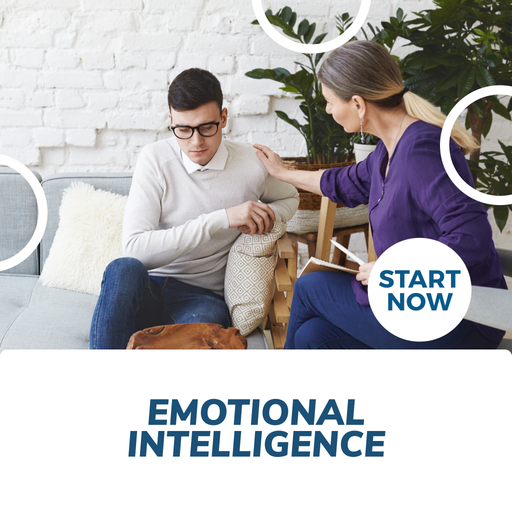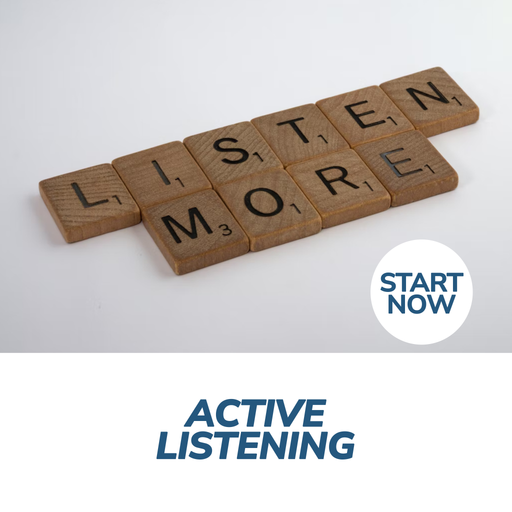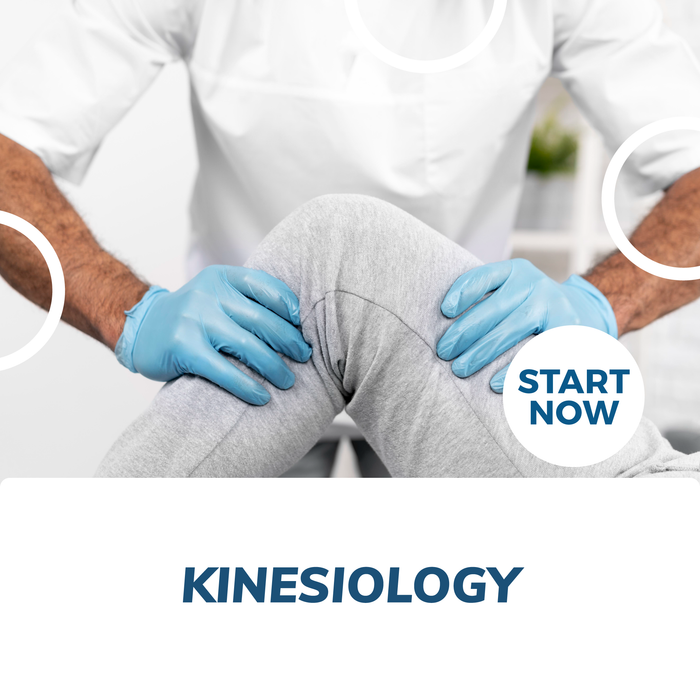
About This Course
Get these Benefits and Start Your Journey as a Certified Kinesiologist Today!
|
|
Study Kinesiology course Online; Gain Health Benefits And Self Awareness Through Kinesiology
The Kinesiology Online Course will introduce you to this alternative medicine method's most popular versions, modalities and explains how they help. In addition, it's designed to provide you with the background for exercise physiology and introduces students to sport psychology and human performance.
This course can assist those looking to begin a career in kinesiology, as well as occupational therapy, as sports managers, or another sports industry role. It is also a great introduction to therapeutic interventions and can prepare students for field experience or clinical experience.
This kinesiology major will teach you the importance of body muscle testing, used in opposing regions within the pathway. The course will then discuss the kinesiology pathway and other essential aspects in this area. You will also learn how to perform muscle testing and what you can do with specific disturbances in force flow.
Strictly speaking, kinesiology is a proven muscle checker that can provide physicians with data on what type of remedy a client needs. There are numerous areas in which a muscle test can be combined to help: rebuilding your body, making minor lifestyle changes, and helping you choose cures for bodily harm. This course describes the remedies in each area and prepares students for a career in health and fitness.
To successfully complete this course, a student must:
Have access to the internet and the necessary technical skills to navigate the online learning resources
Have access to any mobile device with internet connectivity (laptop, desktop, tablet)
Be a self-directed learner
Possess sound language and literacy knowledge and skills
Quick Course Facts
Course content is structured for easy comprehension and covers current issues within the industry
Sign up and you’ll have instant access to materials and course descriptions
Registered students gain unrestricted access to the Kinesiology Course Online so you can still select topics of particular interest and access these after you've completed the module
All course material is available online 24/7 and can be accessed using any device
Study online kinesiology from anywhere in your own time at your own pace
All students who complete the kinesiology classes will be awarded with a certificate of completion
If you want to request info about our online kinesiology courses, get in touch with our team today. If you want further details on our payment plans or any of the topics in kinesiology we cover, view the FAQs below.
Kinesiology course Online Outline
The kinesiology course provides students with an introduction to athletic studies and is great for those who want to learn more about sport programs and sports and physical activity. But it’s not just about sport. The course with the CFS department of kinesiology is designed to prepare you to provide your clients with therapeutic exercises to help with motor control and motor behavior, injury prevention and general physical fitness.
Although emphasis is placed on the relationship between kinesiology and sport programs, many who go on to work in the industry will focus more on therapeutic modalities of injury and illness, including diet. Here’s what you can expect.
Module 1: Introduction to Kinesiology
Welcome to this applied kinesiology course. In this introductory module, we will talk about applied kinesiology as a practice and its use throughout history. We will also go over some of the advantages and applications of this type of therapy.
Introduction
Applied kinesiology is a complementary therapy that assesses general health through muscle testing. When organs are not functioning correctly, according to applied kinesiology practitioners, the proof might be seen in some muscles indicating weakness.
Training and Practitioner Qualifications
Practitioners of applied kinesiology must finish at least 100 hours of initial training and 300 hours of advanced training before practising. Training must be completed at an International College of Applied Kinesiology-accredited institution (ICApplied kinesiology).
Classical Kinesiology
The scientific study of human bodily movement is known as kinesiology. Both Greek root terms signify "moving" and "study."
History of Applied Kinesiology
What was the beginning of it all? Applied kinesiology is based on a thorough understanding of the nervous system's functioning and human anatomy, physiology, biomechanics, and biochemistry. Traditional Chinese Medicine, acupuncture, and massage are also incorporated.
Benefits of Applied Kinesiology
Applied kinesiology is a type of alternative medicine used to treat various diseases and body dysfunctions. It has been used to treat various conditions, including vertigo, diabetes, osteoporosis, headaches, Parkinson's disease, and many diseases-related belly aches.
Module 2: Anatomy and Health
In Module 2, we will talk about anatomy and health promotion in the context of applied kinesiology. This will involve a review of the body's critical systems and the parts that make them up. We will also discuss the drawbacks of this form of alternative therapy briefly.
Endocrine System
The hormone system is referred to as the endocrine system. It is made up of glands located throughout the body and hormones produced by those glands into the blood or the fluid within cells. It also comprises receptors that let the body recognize and respond to hormones.
Skeletal System
The skeletal system is responsible for human movement and maintaining the body's upright position. The skeletal system gives our bodies their structure and size.
Cardiovascular System
The heart, blood arteries, and blood make up the cardiovascular system. This system handles the internal delivery system of the body. It transports nutrients received from our diet as well as oxygen-rich blood to every region of our bodies. Deoxygenated blood is returned on the return voyage to receive new oxygen and complete the cycle.
The Nervous System
The central nervous system is made up of the brain and spinal cord. The fundamental purpose of this system is to gather data from our entire body to govern and regulate all of our activities.
Respiratory System
Respiration is the process of taking in and exhaling air. Inhaling is taking in oxygen, whereas exhaling is the process of breathing out and releasing carbon dioxide. The respiratory system is in charge of all of these functions.
Limitations of Applied Kinesiology
Applied kinesiology is not intended to diagnose, treat, or cure serious illnesses such as cancer. While specific licenses allow qualified practitioners to practice applied kinesiology, the limited application to severe or acute conditions should be considered.
Module 3: Balance and Imbalance
The principles of balance and imbalance will be discussed in this unit. By detecting places of concern throughout the body, applied kinesiology tries to restore equilibrium to the body. We will also talk about how traditional, contemporary Medicine and applied kinesiology can work together.
What is Balance?
The capacity to keep the body's center of mass above its support base is referred to as physical balance. In other words, when your body achieves a condition of equilibrium and harmony by mixing internal and external factors, it is said to be in a balanced state.
What is Imbalance?
Applied Kinesiology is a treatment method that focuses on identifying imbalances in the body's energy and muscles. It is based on the idea that the human body is designed to function in a balanced condition (health), which is disrupted when someone is sick (unhealthy).
Homeostasis or Balanced State
Homeostasis is an automated process by which a body achieves an optimal balance of internal, physical, and biochemical activities. It is derived from a mix of Greek terms and meaning "a stable or steady state."
Conventional Medicine and Balance
Imaging, testing, and other forms of studies can be used to detect an imbalance in the body. This could include obtaining blood samples or looking at the outside of the body.
Benefits of Conventional/Modern Medicine
Conventional Medicine, unlike alternative or traditional medicine, which is mainly based on cultural traditions and anecdotal evidence, uses a variety of research-based procedures to assist the body to achieve a balanced, healthy condition.
Alternative Medicine
Applied kinesiology is just one method for detecting body imbalances and restoring them to a healthy state. For thousands of years, many different ancient ways have been used to address the issue of sustaining equilibrium.
Benefits of Traditional/Alternative Medicine
In contrast to mainstream therapy, which sometimes includes the use of medications, alternative therapies usually have fewer adverse effects. They are entirely safe to use and based on natural principles.
Module 4: Muscle Testing
The fourth module will go over muscle testing and how it pertains to applied kinesiology. We will also go through the various types of testing and how they are used.
Definition of Muscle Testing
Muscle testing is a diagnostic procedure in which kinesiologists or chiropractors employ alternative medical approaches to identify muscular weaknesses while moving specific muscles. This usually entails utilizing manual resistance or testing against gravity.
Basic Principles
An imbalance arises whenever there is a restriction in the flow of energy for any reason. The muscles in the human body are linked to organs and glands, according to applied kinesiology.
Orthopedic Testing Comparison
Muscle testing in the applied kinesiology idea differs from muscle testing in traditional orthopedic Medicine. Orthopedic Medicine analyzes certain damage to the muscles and surrounding tissues, whereas applied kinesiology focuses on what muscular weakness can explain about other regions of the body.
Applied Kinesiology Testing Methods
Muscle testing is done in a variety of ways by different professions. Because the exact results are susceptible to interpretation by the therapist in question, the diagnosis and assessment may differ from examiner to examiner.
Manual Muscle Testing
Muscle testing can be done in three different ways: MMT, functional testing, and dynamometry. Practitioners, chiropractors, and physical therapists employ MMT as the most prevalent diagnostic evaluation method. It determines a muscle's strength by seeing how it moves in response to gravity and hand resistance.
Dynamometry Strength Testing
Dynamometry is a muscular strength examination in which the examiner assesses the patient's grip strength while holding a handheld dynamometer. This device is small, sensitive, and inexpensive, and it is used to push proximal and distal muscles to their limits.
Break Test
The examiner uses manual force to test the whole range of motion of a limb or other body component in this test. The capacity of the patient to retain the muscle in place and not enable the applied kinesiologist to break the grip is used to assess muscular strength.
Muscle Test Grading
The applied kinesiologist rates muscle strength on a scale of zero to five, with zero indicating no contraction and five indicating the best possible response to the maximum stimulus.
Auricular Energy
The ear's hearing, acoustic, or auditory function is referred to as auricular. According to Traditional Chinese Medicine, the ear is a powerful energy nexus that carries all of the nerves that connect to various regions of the body.
Module 5: Allergy and Nutrition Testing
We will talk about allergy and nutrition testing concerning applied kinesiology in Module 5. This will include a discussion of allergy symptoms as well as how the body reacts to allergens.
Allergies
Allergies are the immune system's reaction to something it considers to be an "invader." Pollen, dander, mold, mites, dust, venom, and some foods are examples of allergens.
Allergy Types and Symptoms
Inflammation, sneezing, nasal blockage, skin infections, and digestive issues are all symptoms of allergies.
Adrenal Function
The tiny triangular glands found above each kidney are known as the adrenal glands. These glands create hormones that are necessary for the body's proper functioning. Blood flow, metabolic activities, and the immune system are all regulated by them.
Allergy Testing
When the human body is in psychological, emotional, and physical equilibrium, it functions appropriately. Energy imbalances can be caused by allergies, traumas, injuries, and other stressors.
Goals
The primary purpose of allergy testing is to determine what kind of allergy you have and how to treat it to understand each client's symptoms better.
Incorporating Nutrition
There is no such thing as a global diet that is suitable for everyone on the planet. Genetically and physiologically, each person is unique. Biochemical individuality is the word used to describe this.
Nutritional Testing
Using muscle testing procedures and various types of food, the applied kinesiologist examines the patient's body. The area of diminished energy is where a muscle shows resistance or weakness.
Goals
Nutrition testing has goals comparable to allergy testing—looking for mental, emotional, and adapted physical elements of symptoms that could be producing issues for the client due to poor diet.
The Role of Diet
Digestion is a vital body function, and a malfunctioning digestive system can significantly impact a client's life. A variety of circumstances can cause poor digestion.
Module 6: Complementary Therapies
Module 6 will go through various complementary therapies that can be utilized in conjunction with applied kinesiology. To begin, we will go over the many terminologies used to describe medical operations. Later, we will look at the advantages and disadvantages of various therapies on applied kinesiology.
Defining Therapies
Before going into some complementary therapies that can be used in conjunction with applied kinesiology, it is necessary to distinguish between conventional, alternative, complementary, and traditional Medicine.
Massage Therapy
Massage treatment and applied kinesiology can complement one another very well. Applied kinesiology is founded on understanding how muscles interact with one another and other body elements like tendons, ligaments, and bones.
Holistic Nutrition
Nutritional Kinesiology is an effective method for determining which foods may be harming a client's health. Applied kinesiologists try to determine which foods are incompatible with a client's body, how their bodily systems are affected, and how much of an imbalance there is.
Aromatherapy
Aromatherapy is a holistic therapeutic approach that promotes health and inner harmony by using naturally aromatic materials such as plant extracts, essential oils, incense, and scented candles. Certain scents have now been scientifically demonstrated to affect our minds, hearts, and limbic systems directly.
Meridian Tapping Therapy
Meridian Tapping Therapy (MTT) is a technique that works with the body's subtle energy systems. It involves tapping on specific meridian spots on the body to elicit a robust emotional response in the client.
Acupuncture
Acupuncturists, like applied kinesiologists, believe that an energy imbalance in the body causes physical illness. Acupuncture is an ancient type of energy treatment that dates back over 4,000 years in China.
Traditional Medical Treatments
The World Health Organization defines traditional Medicine as "the total of knowledge, practices, and abilities based on theories, concepts, and experiences unique to many cultures around the world."
Physical Therapy
For persons whose bodies have been paralyzed or disabled due to an injury, accident, or surgery, physical therapy involves a variety of movement-based treatments. It entails performing physical exercises under the guidance of a licensed physical therapist.
Collaboration
If applied kinesiologists do not know how to apply any of these supplementary therapies, they may collaborate with experts. Some traditional types of therapy, for example, may necessitate specialized training or absorption in a particular cultural heritage.
Module 7: Research and Statistics
We will go over research and statistics on applied kinesiology in this module. Over the last decade, growing interest in applied kinesiology has led to renewed interest in its efficacy.
Recent Research
According to founder George Goodheart, a weak muscle indicates that the organ close to it is in peril. He saw that all muscles are interconnected and that each massive muscle is linked to a distinct organ.
Controversy
The use of applied kinesiology in medical diagnosis is debatable. The majority of official organizations oppose it.
Popularity Over Time
Goodheart began practicing and teaching other practitioners these techniques after he developed the notion of applied kinesiology. For almost 40 years, chiropractors and other health specialists have used applied kinesiology.
Key Statistics
Every five years, the National Board of Chiropractic Examiners (NBCE) surveys chiropractic practice in the United States.
Case Study
A 15-year-old male patient had been suffering from neck, shoulder, and back pain for seven years. As a result, the patient did not engage in much physical activity. Due to foot pronation caused by standing, his muscles were inhibited, according to the examination. His back muscles were tense and stringy, which harmed his abdominal muscles. According to postural analysis, his head was out of alignment by over 3 inches, and he had a tucked pelvis.
Therapies
His pelvis and thoracic spine were adjusted as part of his treatment. On his back and spine, they performed an active release technique (ART). Exercises to target essential parts of the body and correct posture were also given to the patient by applied kinesiologists. He said that he was no longer in agony after the third appointment, which lasted three weeks. His only complaint was sore feet.
Future Research
Given the existing dearth of study on applied kinesiology, more significant research into how this alternative therapy can be used if needed. Advocacy groups frequently fund research based on practitioner ideas.
Module 8: Client Safety
We will talk about client safety and good recordkeeping in this module. To guarantee that the most outstanding safety standards are followed throughout the rehabilitation process, applied kinesiologists must follow a set of ethical, professional, and regulatory guidelines.
Health History
Your patients' medical history includes more than simply their family's medical history or information on the disease or injury they are now experiencing. It should also consider their social circumstances, the type of lifestyle they have been leading, and the emotional and psychological structures they have constructed in their heads.
Maintaining Proper Records
Another crucial part of safeguarding your client's safety is to devise a system for keeping track of their records. This covers all of the details you have learned about their lives and medical conditions.
Risk Assessment
Applied kinesiology is a powerful therapeutic system. However, it is critical to acknowledge that your patient requires a traditional medical system to recover in some circumstances fully.
Emergencies
You should also have emergency procedures in place to safeguard yourself, your employees, and your clients in the event of a fire or injury. This could entail looking for the nearest hospital or performing regular inspections to satisfy regulatory criteria.
Module 9: Career
In this session, we will go over the requirements for becoming an applied kinesiologist and the areas you might need to study to be successful. We will also talk about applied kinesiologists' job options and prospective income ranges.
Entering the Field
Applied kinesiology is a type of complementary medicine that can diagnose and treat a variety of ailments. A bachelor's degree in applied kinesiology will provide you with a thorough understanding of the academic and practical components of the field.
Exercise Science
Exercise science is a branch of applied kinesiology that studies the body's response to physical activity. It uses basic kinesiology principles to figure out how the human body reacts to exercise. Students will learn about the psychology of sport, fitness and wellness and how human movement impacts us.
Fitness
This subject of study teaches you how to keep the human body in peak physical shape. Endurance, strength, and the ease with which functions can be performed are all examples of fitness. This fitness program knowledge will provide students with a basis for physical education, personal training, strength and conditioning and general athletic training.
Nutrition
One of the most significant aspects of applied kinesiology is nutrition and food health promotion. Nutritional science explains how humans utilize nutrients from their meals.
Anatomy and Physiology
Anatomy and physiology will familiarize you with all of the body's components. This knowledge can be employed in applied kinesiology to completely comprehend muscular testing performance and how various body systems interact.
Salary and Career Outlook
Entry-level practitioners in the field of applied kinesiology should expect to earn a modest salary. However, as you gain experience, your salary will rise.
Module 10: Business Best Practices
Welcome to the course's last module. In Module 10, we will talk about how to start your own applied kinesiology practice. We will go through licensing and insurance needs and how to pick the best site for your business. We will also look at some marketing trends and tactics for your new company.
Licensing and Taxes
If you want to start a new firm, you must get a few licenses from the appropriate regulatory organizations. These organizations are in charge of regulating business operations in a specific area. Refusing to get such approvals usually carries severe consequences.
Business and Liability Insurance
As a business owner, you can safeguard your financial interests by purchasing business and liability insurance. There is always the possibility that you will be sued at some point.
Choosing a Location
One of the most important considerations you will make when launching a new business is where to locate it. The ability to attract traffic and consumers will significantly impact how well your business does in the long run.
Equipment Needed
You will need the necessary tools to start applied kinesiology, just as in any other career. You may need to begin by buying a few pieces of equipment at a time, gradually expanding your offerings as your company expands.
Customer Service
Customer service is the lifeblood of any company looking to expand. In a short period, a proper customer service setup can improve the company's image.
Social Media
It is reasonable to assume that a marketing effort is not complete without the use of social media. Despite the task's difficulty, social media remains one of the most effective strategies to launch a successful marketing campaign.
Digital Advertising
The usage of marketing strategies such as search engines and emails is used in this kind of advertising. It is a method that's been tried and true. When you get digital advertising correctly, you can reap a slew of rewards.
Local Marketing
Because applied kinesiology services are provided in person, you may also use your local connections to generate leads. This could entail collaborating with other alternative medicine practitioners in order to provide a broader range of services.
Further Learning
On completion of your Courses for Success degree in kinesiology online, you might be looking to further your personal development and your professional development. We offer a range of options, from management courses to business courses, biology courses to computational engineering courses. We have design courses, physics courses and various American studies courses. Whatever you want, you’ll likely find it with CFS.
We offer a degree in kinesiology course bundle as well. You can browse through the full range to see what stands out.
Each course is designed specifically for online training. Our education courses are easy to understand, and the best part is, with some of the courses you’ll have lifetime access to the course materials.
Recognition & Accreditation
Upon successful completion of this intro to kinesiology course and achieving a passing score for the assessment, you will be issued with an international continuing education credit (CEU) certificate.
This Certificate is applicable worldwide, which demonstrates your commitment to learning new skills. You can share the certificate with your friends, relatives, co-workers, and potential employers. Also, include it in your resume/CV, professional social media profiles and job applications.
Units of Study
Module 1: Introduction to Kinesiology
- Introduction
- Training and Practitioner Qualifications
- Classical Kinesiology
- History of Applied Kinesiology
- Benefits of Applied Kinesiology
Module 2: Anatomy and Health
- Endocrine System
- Skeletal System
- Cardiovascular System
- The Nervous System
- Respiratory System
- Limitations of Applied Kinesiology
Module 3: Balance and Imbalance
- What is Balance?
- What is Imbalance?
- Homeostasis or Balanced State
- Conventional Medicine and Balance
- Benefits of Conventional/Modern Medicine
- Alternative Medicine
- Benefits of Traditional/Alternative Medicine
Module 4: Muscle Testing
- Definition of Muscle Testing
- Basic Principles
- Orthopedic Testing Comparison
- Applied Kinesiology Testing Methods
- Manual Muscle Testing
- Dynamometry Strength Testing
- Break Test
- Muscle Test Grading
- Auricular Energy
Module 5: Allergy and Nutrition Testing
- Allergies
- Allergy Types and Symptoms
- Adrenal Function
- Allergy Testing
- Goals
- Incorporating Nutrition
- Nutritional Testing
- Goals
- The Role of Diet
Module 6: Complementary Therapies
- Defining Therapies
- Massage Therapy
- Holistic Nutrition
- Aromatherapy
- Meridian Tapping Therapy
- Acupuncture
- Traditional Medical Treatments
- Physical Therapy
- Collaboration
Module 7: Research and Statistics
- Recent Research
- Controversy
- Popularity Over Time
- Key Statistics
- Case Study
- Therapies
- Future Research
Module 8: Client Safety
- Health History
- Maintaining Proper Records
- Risk Assessment
- Emergencies
Module 9: Career
- Entering the Field
- Exercise Science
- Fitness
- Nutrition
- Anatomy and Physiology
- Salary and Career Outlook
Module 10: Business Best Practices
- Licensing and Taxes
- Business and Liability Insurance
- Choosing a Location
- Equipment Needed
- Customer Service
- Social Media
- Digital Advertising
- Local Marketing
Requirements
Entry requirements
Students must have basic literacy and numeracy skills.
Minimum education
Open entry. Previous schooling and academic achievements are not required for entry into this course.
Computer requirements
Students will need access to a computer and the internet.
Minimum specifications for the computer are:
Windows:
Microsoft Windows XP, or laterModern and up to date Browser (Internet Explorer 8 or later, Firefox, Chrome, Safari)
MAC/iOS
OSX/iOS 6 or laterModern and up to date Browser (Firefox, Chrome, Safari)
All systems
Internet bandwidth of 1Mb or fasterFlash player or a browser with HTML5 video capabilities(Currently Internet Explorer 9, Firefox, Chrome, Safari)
Students will also need access the following applications:
Adobe Acrobat Reader
Requirements
Entry requirements:
Students must have basic literacy and numeracy skills.
Minimum education:
Open entry. Previous schooling and academic achievements are not required for entry into this course.
Device requirements:
Students will need access to a computer/any device and the internet.
FAQS
1. Who are Courses For Success?
Courses For Success is a course platform that started in 2008
with 5 courses, since then we have grown to over 10,000 online courses.
Our courses span across the following categories:
•Animal
•Beauty
•Business
•Health & Fitness
•Finance
•Lifestyle
•IT & Software
•Personal Development
•Teaching & Academics
2. Is there a refund/cancellation policy?
Yes, we have a 7-day money-back refund guarantee. Just send us an email to info@coursesforsuccess.com with the subject Courses For Success Refund so we can accommodate your request.
3. What is the FREE Personal Success Training Program?
The Personal Success Training Program
was developed by Courses For Success to help our customers achieve
success. Currently, we are offering this program for FREE with every
course or bundle purchase this month. This is a limited time offer!
4. Are there any requirements to study this course?
No,
anyone who has an interest in learning more about this subject matter
is encouraged to take our course. There are no entry requirements to
take this course.
5. Do I require to have finished high school to complete this course?
No,
you do not require a High School Diploma or to have finished school to
study this course, this course is open to anyone who would like to take
this course.
6. What if English is not my first language?
This
course is provided in English, however, due to the digital nature of
our training, you can take your time studying the material and make use
of tools such as google translate and Grammarly.
7. Is this course online or conducted in person?
All our courses are accessible online on any device. You may complete them at your own pace and at your own time.
8. How do I receive my course?
After
you have completed the payment, you will receive a confirmation email
and tax receipt. You will also receive an email containing your course
login details (username and password), as well as instructions on how to
access and log in to your course via the internet with any device,
please check your junk/spam folder in the event that you do not receive
the email.
9. When does this course start?
Providing
you have internet access you can start this course whenever you like,
just go to the login page and insert your username and password and you
can access the online material.
10. What is online learning like?
Online learning is easy, if not easier than a traditional academic situation.
By studying an online course, the usual boundaries caused by location and time constraints are eliminated, meaning you are free to study where and when you want at your own pace.
Of course, you will need to be able to self-manage your time and be organized, but with our help, you’ll soon find yourself settling into a comfortable rhythm of study.
11. What computer skills do I need for my course?
You
don't need to be a computer expert to succeed with our online training,
but you should be comfortable typing, using the internet and be capable
of using common software (such as Microsoft word).
12. How long will you have access to the online course?
The majority of our courses have unlimited lifetime access, meaning you can access this course whenever you want.
Please also check the course summary, as a small selection of courses have limited access.
13. How long will my course take?
Course duration, is listed under Course Summary
14. Do I need to buy textbooks?
All the required material for your course is included in the online system, you do not need to buy anything else.
15. Is the course interactive?
Yes, all our courses are interactive.
16. Is there an assessment or exam?
Yes,
you will be required to complete a multiple-choice test online at the
end of your course, you can do this test as many times as you require.
17. What type of certificate will I receive?
You
will receive a Certificate of Completion that is applicable worldwide,
which demonstrates your commitment to learning new skills. You can share
the certificate with your friends, relatives, co-workers and employers.
Also, include it in your resume/CV, professional social media profiles
and job applications.
Wendy Sue Hunt - 5 STAR REVIEW
"If you are considering taking any “Courses for Success”, I would highly recommend it. I have always been a firm believer it’s important to always sharpen your skills. You are never too old to learn more. I found the courses very helpful, interesting and easy to understand.
The term “Courses for Success” helped me in my current position to succeed. After completing the courses, I gave my manager the completion certificates. Recently I received a promotion too."
Valencia Marie Aviles - 5 STAR REVIEW
"I
had a very good experience with my course. It has helped me to get
multiple jobs and prepared me for almost everything I would need to
know. The course was very informative and easy to understand and broken
up perfectly to be done in a short amount of time while still learning a
good amount! I would recommend Courses for Success to anyone trying to
get abs certifications for job advancements, it is well worth it!"
ELENA GRIFFIN - 5 STAR REVIEW
"I have absolutely enjoyed the materials from Courses for Success. The materials are easy to understand which makes learning enjoyable. Courses for Success have great topics of interest which make you come back for
more.
Thank you Courses for Success for being part of my learning journey and making education affordable!"
Our
completion certificates are very valuable and will help you progress in
your work environment and show employers how committed you are to learn
new skills, you might even get a promotion.
18. Will this course be credited by universities?
No, it is not equivalent to a college or university credit.
19. Am I guaranteed to get a job with this certificate?
This course will give you the skills you need to help you obtain employment, but it’s up to you if you get the job or not.
20. How will this course assist me with my career?
Studying
and completing this course will show employers that you have the
knowledge in this field, additionally you will gain more confidence in
this area of expertise.
21. How long is the certificate valid for?
The Certificates are valid for life and do not need renewing.
22. Can I take more than one course at a time?
Courses
are studied online at your own pace and you are free to study as many
or as few courses as you wish, we also offer online course bundles that
allow you to save on additional courses so that you may get all the
topics related to your training goals in one go.
23. What are the Payment Methods available? Is there a payment plan?
We accept payments via PayPal, Credit Card and Bank Transfer.
Payment Plans: We have partnered with Partial.ly, to offer our own in house payment plan. Everyone is Pre-Approved, providing the initial deposit is paid in full.
To pay via bank transfer contact us info@coursesforsuccess.com
24. Can I purchase for multiple people?
Yes, you can do this by purchasing individually via website or send us a request via email at info@coursesforsuccess.com
25. Can I request for an invoice before purchase?
Yes, you can request for an invoice via email at info@coursesforsuccess.com
26. Purchase for a gift?
Yes, you can purchase this course as a gift, simply send an email to info@coursesforsuccess.com, with the course details and we can accommodate this.
27. Can I create my own course bundle?
Yes,
you can customize your own bundle. Please send us the complete list
with the exact course link of the courses you'd like to bundle up via
email info@coursesforsuccess.com and we will create them for you. *Each course access, time of completion and certification varies depending on the course type.
28. How will I contact Courses For Success if I have any questions?
You can contact our support team, at any time through live chat on our website, or email at info@coursesforsuccess.com, or by calling one of our phone numbers depending on which country you are in.
Free Personal Success Training Course
The Personal Success Training Program Helps You Stay Focused To Achieve Your Goals!
This month, we are providing it for Free with all Course Purchases, as a special offer!
Benefits:
• How to layout a Success Plan.
• Get where you want to be in life.
• How to unclutter your mind to succeed.
• Achieve your dreams using your imagination.
• How to have faith in yourself.
Features:
• Life time access
• Complement your individual course purchase.
• Click here Personal Success Training Program to see thousands of positive reviews,
Hurry - offer - ends this month!
Course Bundles
Looking for specific training for yourself or employees. Choose from our Course Bundles below or build you own Bundle, by adding more courses to your cart. Choose different courses or the same course for multiple staff members and receive volume discounts at checkout.
Kinesiology Online Certificate Course
"The course is extremely well-organized and comprehensive. What I was most impressed by was the customer service response time when I had a question about the course." - Sue M. Verified Buyer.
Discover the most sought-after approaches to this alternative treatment, plus its advantages, with the Kinesiology Online Course Certificate!
Bundle Up & Save - Learn More and Save More when you Upgrade to one of our Course Bundles below - Save Up To 98%
Course Summary
- Delivery: Online
- Access: Unlimited Lifetime
- Time: Study at your own pace
- Duration:20 Hours
- Assessments: Yes
- Qualification: Certificate
3 DAY SALE - ENDS MIDNIGHT TODAY
GET IN NOW & SAVE!
About This Course
Get these Benefits and Start Your Journey as a Certified Kinesiologist Today!
|
|
Study Kinesiology course Online; Gain Health Benefits And Self Awareness Through Kinesiology
The Kinesiology Online Course will introduce you to this alternative medicine method's most popular versions, modalities and explains how they help. In addition, it's designed to provide you with the background for exercise physiology and introduces students to sport psychology and human performance.
This course can assist those looking to begin a career in kinesiology, as well as occupational therapy, as sports managers, or another sports industry role. It is also a great introduction to therapeutic interventions and can prepare students for field experience or clinical experience.
This kinesiology major will teach you the importance of body muscle testing, used in opposing regions within the pathway. The course will then discuss the kinesiology pathway and other essential aspects in this area. You will also learn how to perform muscle testing and what you can do with specific disturbances in force flow.
Strictly speaking, kinesiology is a proven muscle checker that can provide physicians with data on what type of remedy a client needs. There are numerous areas in which a muscle test can be combined to help: rebuilding your body, making minor lifestyle changes, and helping you choose cures for bodily harm. This course describes the remedies in each area and prepares students for a career in health and fitness.
To successfully complete this course, a student must:
Have access to the internet and the necessary technical skills to navigate the online learning resources
Have access to any mobile device with internet connectivity (laptop, desktop, tablet)
Be a self-directed learner
Possess sound language and literacy knowledge and skills
Quick Course Facts
Course content is structured for easy comprehension and covers current issues within the industry
Sign up and you’ll have instant access to materials and course descriptions
Registered students gain unrestricted access to the Kinesiology Course Online so you can still select topics of particular interest and access these after you've completed the module
All course material is available online 24/7 and can be accessed using any device
Study online kinesiology from anywhere in your own time at your own pace
All students who complete the kinesiology classes will be awarded with a certificate of completion
If you want to request info about our online kinesiology courses, get in touch with our team today. If you want further details on our payment plans or any of the topics in kinesiology we cover, view the FAQs below.
Kinesiology course Online Outline
The kinesiology course provides students with an introduction to athletic studies and is great for those who want to learn more about sport programs and sports and physical activity. But it’s not just about sport. The course with the CFS department of kinesiology is designed to prepare you to provide your clients with therapeutic exercises to help with motor control and motor behavior, injury prevention and general physical fitness.
Although emphasis is placed on the relationship between kinesiology and sport programs, many who go on to work in the industry will focus more on therapeutic modalities of injury and illness, including diet. Here’s what you can expect.
Module 1: Introduction to Kinesiology
Welcome to this applied kinesiology course. In this introductory module, we will talk about applied kinesiology as a practice and its use throughout history. We will also go over some of the advantages and applications of this type of therapy.
Introduction
Applied kinesiology is a complementary therapy that assesses general health through muscle testing. When organs are not functioning correctly, according to applied kinesiology practitioners, the proof might be seen in some muscles indicating weakness.
Training and Practitioner Qualifications
Practitioners of applied kinesiology must finish at least 100 hours of initial training and 300 hours of advanced training before practising. Training must be completed at an International College of Applied Kinesiology-accredited institution (ICApplied kinesiology).
Classical Kinesiology
The scientific study of human bodily movement is known as kinesiology. Both Greek root terms signify "moving" and "study."
History of Applied Kinesiology
What was the beginning of it all? Applied kinesiology is based on a thorough understanding of the nervous system's functioning and human anatomy, physiology, biomechanics, and biochemistry. Traditional Chinese Medicine, acupuncture, and massage are also incorporated.
Benefits of Applied Kinesiology
Applied kinesiology is a type of alternative medicine used to treat various diseases and body dysfunctions. It has been used to treat various conditions, including vertigo, diabetes, osteoporosis, headaches, Parkinson's disease, and many diseases-related belly aches.
Module 2: Anatomy and Health
In Module 2, we will talk about anatomy and health promotion in the context of applied kinesiology. This will involve a review of the body's critical systems and the parts that make them up. We will also discuss the drawbacks of this form of alternative therapy briefly.
Endocrine System
The hormone system is referred to as the endocrine system. It is made up of glands located throughout the body and hormones produced by those glands into the blood or the fluid within cells. It also comprises receptors that let the body recognize and respond to hormones.
Skeletal System
The skeletal system is responsible for human movement and maintaining the body's upright position. The skeletal system gives our bodies their structure and size.
Cardiovascular System
The heart, blood arteries, and blood make up the cardiovascular system. This system handles the internal delivery system of the body. It transports nutrients received from our diet as well as oxygen-rich blood to every region of our bodies. Deoxygenated blood is returned on the return voyage to receive new oxygen and complete the cycle.
The Nervous System
The central nervous system is made up of the brain and spinal cord. The fundamental purpose of this system is to gather data from our entire body to govern and regulate all of our activities.
Respiratory System
Respiration is the process of taking in and exhaling air. Inhaling is taking in oxygen, whereas exhaling is the process of breathing out and releasing carbon dioxide. The respiratory system is in charge of all of these functions.
Limitations of Applied Kinesiology
Applied kinesiology is not intended to diagnose, treat, or cure serious illnesses such as cancer. While specific licenses allow qualified practitioners to practice applied kinesiology, the limited application to severe or acute conditions should be considered.
Module 3: Balance and Imbalance
The principles of balance and imbalance will be discussed in this unit. By detecting places of concern throughout the body, applied kinesiology tries to restore equilibrium to the body. We will also talk about how traditional, contemporary Medicine and applied kinesiology can work together.
What is Balance?
The capacity to keep the body's center of mass above its support base is referred to as physical balance. In other words, when your body achieves a condition of equilibrium and harmony by mixing internal and external factors, it is said to be in a balanced state.
What is Imbalance?
Applied Kinesiology is a treatment method that focuses on identifying imbalances in the body's energy and muscles. It is based on the idea that the human body is designed to function in a balanced condition (health), which is disrupted when someone is sick (unhealthy).
Homeostasis or Balanced State
Homeostasis is an automated process by which a body achieves an optimal balance of internal, physical, and biochemical activities. It is derived from a mix of Greek terms and meaning "a stable or steady state."
Conventional Medicine and Balance
Imaging, testing, and other forms of studies can be used to detect an imbalance in the body. This could include obtaining blood samples or looking at the outside of the body.
Benefits of Conventional/Modern Medicine
Conventional Medicine, unlike alternative or traditional medicine, which is mainly based on cultural traditions and anecdotal evidence, uses a variety of research-based procedures to assist the body to achieve a balanced, healthy condition.
Alternative Medicine
Applied kinesiology is just one method for detecting body imbalances and restoring them to a healthy state. For thousands of years, many different ancient ways have been used to address the issue of sustaining equilibrium.
Benefits of Traditional/Alternative Medicine
In contrast to mainstream therapy, which sometimes includes the use of medications, alternative therapies usually have fewer adverse effects. They are entirely safe to use and based on natural principles.
Module 4: Muscle Testing
The fourth module will go over muscle testing and how it pertains to applied kinesiology. We will also go through the various types of testing and how they are used.
Definition of Muscle Testing
Muscle testing is a diagnostic procedure in which kinesiologists or chiropractors employ alternative medical approaches to identify muscular weaknesses while moving specific muscles. This usually entails utilizing manual resistance or testing against gravity.
Basic Principles
An imbalance arises whenever there is a restriction in the flow of energy for any reason. The muscles in the human body are linked to organs and glands, according to applied kinesiology.
Orthopedic Testing Comparison
Muscle testing in the applied kinesiology idea differs from muscle testing in traditional orthopedic Medicine. Orthopedic Medicine analyzes certain damage to the muscles and surrounding tissues, whereas applied kinesiology focuses on what muscular weakness can explain about other regions of the body.
Applied Kinesiology Testing Methods
Muscle testing is done in a variety of ways by different professions. Because the exact results are susceptible to interpretation by the therapist in question, the diagnosis and assessment may differ from examiner to examiner.
Manual Muscle Testing
Muscle testing can be done in three different ways: MMT, functional testing, and dynamometry. Practitioners, chiropractors, and physical therapists employ MMT as the most prevalent diagnostic evaluation method. It determines a muscle's strength by seeing how it moves in response to gravity and hand resistance.
Dynamometry Strength Testing
Dynamometry is a muscular strength examination in which the examiner assesses the patient's grip strength while holding a handheld dynamometer. This device is small, sensitive, and inexpensive, and it is used to push proximal and distal muscles to their limits.
Break Test
The examiner uses manual force to test the whole range of motion of a limb or other body component in this test. The capacity of the patient to retain the muscle in place and not enable the applied kinesiologist to break the grip is used to assess muscular strength.
Muscle Test Grading
The applied kinesiologist rates muscle strength on a scale of zero to five, with zero indicating no contraction and five indicating the best possible response to the maximum stimulus.
Auricular Energy
The ear's hearing, acoustic, or auditory function is referred to as auricular. According to Traditional Chinese Medicine, the ear is a powerful energy nexus that carries all of the nerves that connect to various regions of the body.
Module 5: Allergy and Nutrition Testing
We will talk about allergy and nutrition testing concerning applied kinesiology in Module 5. This will include a discussion of allergy symptoms as well as how the body reacts to allergens.
Allergies
Allergies are the immune system's reaction to something it considers to be an "invader." Pollen, dander, mold, mites, dust, venom, and some foods are examples of allergens.
Allergy Types and Symptoms
Inflammation, sneezing, nasal blockage, skin infections, and digestive issues are all symptoms of allergies.
Adrenal Function
The tiny triangular glands found above each kidney are known as the adrenal glands. These glands create hormones that are necessary for the body's proper functioning. Blood flow, metabolic activities, and the immune system are all regulated by them.
Allergy Testing
When the human body is in psychological, emotional, and physical equilibrium, it functions appropriately. Energy imbalances can be caused by allergies, traumas, injuries, and other stressors.
Goals
The primary purpose of allergy testing is to determine what kind of allergy you have and how to treat it to understand each client's symptoms better.
Incorporating Nutrition
There is no such thing as a global diet that is suitable for everyone on the planet. Genetically and physiologically, each person is unique. Biochemical individuality is the word used to describe this.
Nutritional Testing
Using muscle testing procedures and various types of food, the applied kinesiologist examines the patient's body. The area of diminished energy is where a muscle shows resistance or weakness.
Goals
Nutrition testing has goals comparable to allergy testing—looking for mental, emotional, and adapted physical elements of symptoms that could be producing issues for the client due to poor diet.
The Role of Diet
Digestion is a vital body function, and a malfunctioning digestive system can significantly impact a client's life. A variety of circumstances can cause poor digestion.
Module 6: Complementary Therapies
Module 6 will go through various complementary therapies that can be utilized in conjunction with applied kinesiology. To begin, we will go over the many terminologies used to describe medical operations. Later, we will look at the advantages and disadvantages of various therapies on applied kinesiology.
Defining Therapies
Before going into some complementary therapies that can be used in conjunction with applied kinesiology, it is necessary to distinguish between conventional, alternative, complementary, and traditional Medicine.
Massage Therapy
Massage treatment and applied kinesiology can complement one another very well. Applied kinesiology is founded on understanding how muscles interact with one another and other body elements like tendons, ligaments, and bones.
Holistic Nutrition
Nutritional Kinesiology is an effective method for determining which foods may be harming a client's health. Applied kinesiologists try to determine which foods are incompatible with a client's body, how their bodily systems are affected, and how much of an imbalance there is.
Aromatherapy
Aromatherapy is a holistic therapeutic approach that promotes health and inner harmony by using naturally aromatic materials such as plant extracts, essential oils, incense, and scented candles. Certain scents have now been scientifically demonstrated to affect our minds, hearts, and limbic systems directly.
Meridian Tapping Therapy
Meridian Tapping Therapy (MTT) is a technique that works with the body's subtle energy systems. It involves tapping on specific meridian spots on the body to elicit a robust emotional response in the client.
Acupuncture
Acupuncturists, like applied kinesiologists, believe that an energy imbalance in the body causes physical illness. Acupuncture is an ancient type of energy treatment that dates back over 4,000 years in China.
Traditional Medical Treatments
The World Health Organization defines traditional Medicine as "the total of knowledge, practices, and abilities based on theories, concepts, and experiences unique to many cultures around the world."
Physical Therapy
For persons whose bodies have been paralyzed or disabled due to an injury, accident, or surgery, physical therapy involves a variety of movement-based treatments. It entails performing physical exercises under the guidance of a licensed physical therapist.
Collaboration
If applied kinesiologists do not know how to apply any of these supplementary therapies, they may collaborate with experts. Some traditional types of therapy, for example, may necessitate specialized training or absorption in a particular cultural heritage.
Module 7: Research and Statistics
We will go over research and statistics on applied kinesiology in this module. Over the last decade, growing interest in applied kinesiology has led to renewed interest in its efficacy.
Recent Research
According to founder George Goodheart, a weak muscle indicates that the organ close to it is in peril. He saw that all muscles are interconnected and that each massive muscle is linked to a distinct organ.
Controversy
The use of applied kinesiology in medical diagnosis is debatable. The majority of official organizations oppose it.
Popularity Over Time
Goodheart began practicing and teaching other practitioners these techniques after he developed the notion of applied kinesiology. For almost 40 years, chiropractors and other health specialists have used applied kinesiology.
Key Statistics
Every five years, the National Board of Chiropractic Examiners (NBCE) surveys chiropractic practice in the United States.
Case Study
A 15-year-old male patient had been suffering from neck, shoulder, and back pain for seven years. As a result, the patient did not engage in much physical activity. Due to foot pronation caused by standing, his muscles were inhibited, according to the examination. His back muscles were tense and stringy, which harmed his abdominal muscles. According to postural analysis, his head was out of alignment by over 3 inches, and he had a tucked pelvis.
Therapies
His pelvis and thoracic spine were adjusted as part of his treatment. On his back and spine, they performed an active release technique (ART). Exercises to target essential parts of the body and correct posture were also given to the patient by applied kinesiologists. He said that he was no longer in agony after the third appointment, which lasted three weeks. His only complaint was sore feet.
Future Research
Given the existing dearth of study on applied kinesiology, more significant research into how this alternative therapy can be used if needed. Advocacy groups frequently fund research based on practitioner ideas.
Module 8: Client Safety
We will talk about client safety and good recordkeeping in this module. To guarantee that the most outstanding safety standards are followed throughout the rehabilitation process, applied kinesiologists must follow a set of ethical, professional, and regulatory guidelines.
Health History
Your patients' medical history includes more than simply their family's medical history or information on the disease or injury they are now experiencing. It should also consider their social circumstances, the type of lifestyle they have been leading, and the emotional and psychological structures they have constructed in their heads.
Maintaining Proper Records
Another crucial part of safeguarding your client's safety is to devise a system for keeping track of their records. This covers all of the details you have learned about their lives and medical conditions.
Risk Assessment
Applied kinesiology is a powerful therapeutic system. However, it is critical to acknowledge that your patient requires a traditional medical system to recover in some circumstances fully.
Emergencies
You should also have emergency procedures in place to safeguard yourself, your employees, and your clients in the event of a fire or injury. This could entail looking for the nearest hospital or performing regular inspections to satisfy regulatory criteria.
Module 9: Career
In this session, we will go over the requirements for becoming an applied kinesiologist and the areas you might need to study to be successful. We will also talk about applied kinesiologists' job options and prospective income ranges.
Entering the Field
Applied kinesiology is a type of complementary medicine that can diagnose and treat a variety of ailments. A bachelor's degree in applied kinesiology will provide you with a thorough understanding of the academic and practical components of the field.
Exercise Science
Exercise science is a branch of applied kinesiology that studies the body's response to physical activity. It uses basic kinesiology principles to figure out how the human body reacts to exercise. Students will learn about the psychology of sport, fitness and wellness and how human movement impacts us.
Fitness
This subject of study teaches you how to keep the human body in peak physical shape. Endurance, strength, and the ease with which functions can be performed are all examples of fitness. This fitness program knowledge will provide students with a basis for physical education, personal training, strength and conditioning and general athletic training.
Nutrition
One of the most significant aspects of applied kinesiology is nutrition and food health promotion. Nutritional science explains how humans utilize nutrients from their meals.
Anatomy and Physiology
Anatomy and physiology will familiarize you with all of the body's components. This knowledge can be employed in applied kinesiology to completely comprehend muscular testing performance and how various body systems interact.
Salary and Career Outlook
Entry-level practitioners in the field of applied kinesiology should expect to earn a modest salary. However, as you gain experience, your salary will rise.
Module 10: Business Best Practices
Welcome to the course's last module. In Module 10, we will talk about how to start your own applied kinesiology practice. We will go through licensing and insurance needs and how to pick the best site for your business. We will also look at some marketing trends and tactics for your new company.
Licensing and Taxes
If you want to start a new firm, you must get a few licenses from the appropriate regulatory organizations. These organizations are in charge of regulating business operations in a specific area. Refusing to get such approvals usually carries severe consequences.
Business and Liability Insurance
As a business owner, you can safeguard your financial interests by purchasing business and liability insurance. There is always the possibility that you will be sued at some point.
Choosing a Location
One of the most important considerations you will make when launching a new business is where to locate it. The ability to attract traffic and consumers will significantly impact how well your business does in the long run.
Equipment Needed
You will need the necessary tools to start applied kinesiology, just as in any other career. You may need to begin by buying a few pieces of equipment at a time, gradually expanding your offerings as your company expands.
Customer Service
Customer service is the lifeblood of any company looking to expand. In a short period, a proper customer service setup can improve the company's image.
Social Media
It is reasonable to assume that a marketing effort is not complete without the use of social media. Despite the task's difficulty, social media remains one of the most effective strategies to launch a successful marketing campaign.
Digital Advertising
The usage of marketing strategies such as search engines and emails is used in this kind of advertising. It is a method that's been tried and true. When you get digital advertising correctly, you can reap a slew of rewards.
Local Marketing
Because applied kinesiology services are provided in person, you may also use your local connections to generate leads. This could entail collaborating with other alternative medicine practitioners in order to provide a broader range of services.
Further Learning
On completion of your Courses for Success degree in kinesiology online, you might be looking to further your personal development and your professional development. We offer a range of options, from management courses to business courses, biology courses to computational engineering courses. We have design courses, physics courses and various American studies courses. Whatever you want, you’ll likely find it with CFS.
We offer a degree in kinesiology course bundle as well. You can browse through the full range to see what stands out.
Each course is designed specifically for online training. Our education courses are easy to understand, and the best part is, with some of the courses you’ll have lifetime access to the course materials.
Recognition & Accreditation
Upon successful completion of this intro to kinesiology course and achieving a passing score for the assessment, you will be issued with an international continuing education credit (CEU) certificate.
This Certificate is applicable worldwide, which demonstrates your commitment to learning new skills. You can share the certificate with your friends, relatives, co-workers, and potential employers. Also, include it in your resume/CV, professional social media profiles and job applications.
Units of Study
Module 1: Introduction to Kinesiology
- Introduction
- Training and Practitioner Qualifications
- Classical Kinesiology
- History of Applied Kinesiology
- Benefits of Applied Kinesiology
Module 2: Anatomy and Health
- Endocrine System
- Skeletal System
- Cardiovascular System
- The Nervous System
- Respiratory System
- Limitations of Applied Kinesiology
Module 3: Balance and Imbalance
- What is Balance?
- What is Imbalance?
- Homeostasis or Balanced State
- Conventional Medicine and Balance
- Benefits of Conventional/Modern Medicine
- Alternative Medicine
- Benefits of Traditional/Alternative Medicine
Module 4: Muscle Testing
- Definition of Muscle Testing
- Basic Principles
- Orthopedic Testing Comparison
- Applied Kinesiology Testing Methods
- Manual Muscle Testing
- Dynamometry Strength Testing
- Break Test
- Muscle Test Grading
- Auricular Energy
Module 5: Allergy and Nutrition Testing
- Allergies
- Allergy Types and Symptoms
- Adrenal Function
- Allergy Testing
- Goals
- Incorporating Nutrition
- Nutritional Testing
- Goals
- The Role of Diet
Module 6: Complementary Therapies
- Defining Therapies
- Massage Therapy
- Holistic Nutrition
- Aromatherapy
- Meridian Tapping Therapy
- Acupuncture
- Traditional Medical Treatments
- Physical Therapy
- Collaboration
Module 7: Research and Statistics
- Recent Research
- Controversy
- Popularity Over Time
- Key Statistics
- Case Study
- Therapies
- Future Research
Module 8: Client Safety
- Health History
- Maintaining Proper Records
- Risk Assessment
- Emergencies
Module 9: Career
- Entering the Field
- Exercise Science
- Fitness
- Nutrition
- Anatomy and Physiology
- Salary and Career Outlook
Module 10: Business Best Practices
- Licensing and Taxes
- Business and Liability Insurance
- Choosing a Location
- Equipment Needed
- Customer Service
- Social Media
- Digital Advertising
- Local Marketing
Requirements
Entry requirements
Students must have basic literacy and numeracy skills.
Minimum education
Open entry. Previous schooling and academic achievements are not required for entry into this course.
Computer requirements
Students will need access to a computer and the internet.
Minimum specifications for the computer are:
Windows:
Microsoft Windows XP, or laterModern and up to date Browser (Internet Explorer 8 or later, Firefox, Chrome, Safari)
MAC/iOS
OSX/iOS 6 or laterModern and up to date Browser (Firefox, Chrome, Safari)
All systems
Internet bandwidth of 1Mb or fasterFlash player or a browser with HTML5 video capabilities(Currently Internet Explorer 9, Firefox, Chrome, Safari)
Students will also need access the following applications:
Adobe Acrobat Reader
Requirements
Entry requirements:
Students must have basic literacy and numeracy skills.
Minimum education:
Open entry. Previous schooling and academic achievements are not required for entry into this course.
Device requirements:
Students will need access to a computer/any device and the internet.
FAQS
1. Who are Courses For Success?
Courses For Success is a course platform that started in 2008
with 5 courses, since then we have grown to over 10,000 online courses.
Our courses span across the following categories:
•Animal
•Beauty
•Business
•Health & Fitness
•Finance
•Lifestyle
•IT & Software
•Personal Development
•Teaching & Academics
2. Is there a refund/cancellation policy?
Yes, we have a 7-day money-back refund guarantee. Just send us an email to info@coursesforsuccess.com with the subject Courses For Success Refund so we can accommodate your request.
3. What is the FREE Personal Success Training Program?
The Personal Success Training Program
was developed by Courses For Success to help our customers achieve
success. Currently, we are offering this program for FREE with every
course or bundle purchase this month. This is a limited time offer!
4. Are there any requirements to study this course?
No,
anyone who has an interest in learning more about this subject matter
is encouraged to take our course. There are no entry requirements to
take this course.
5. Do I require to have finished high school to complete this course?
No,
you do not require a High School Diploma or to have finished school to
study this course, this course is open to anyone who would like to take
this course.
6. What if English is not my first language?
This
course is provided in English, however, due to the digital nature of
our training, you can take your time studying the material and make use
of tools such as google translate and Grammarly.
7. Is this course online or conducted in person?
All our courses are accessible online on any device. You may complete them at your own pace and at your own time.
8. How do I receive my course?
After
you have completed the payment, you will receive a confirmation email
and tax receipt. You will also receive an email containing your course
login details (username and password), as well as instructions on how to
access and log in to your course via the internet with any device,
please check your junk/spam folder in the event that you do not receive
the email.
9. When does this course start?
Providing
you have internet access you can start this course whenever you like,
just go to the login page and insert your username and password and you
can access the online material.
10. What is online learning like?
Online learning is easy, if not easier than a traditional academic situation.
By studying an online course, the usual boundaries caused by location and time constraints are eliminated, meaning you are free to study where and when you want at your own pace.
Of course, you will need to be able to self-manage your time and be organized, but with our help, you’ll soon find yourself settling into a comfortable rhythm of study.
11. What computer skills do I need for my course?
You
don't need to be a computer expert to succeed with our online training,
but you should be comfortable typing, using the internet and be capable
of using common software (such as Microsoft word).
12. How long will you have access to the online course?
The majority of our courses have unlimited lifetime access, meaning you can access this course whenever you want.
Please also check the course summary, as a small selection of courses have limited access.
13. How long will my course take?
Course duration, is listed under Course Summary
14. Do I need to buy textbooks?
All the required material for your course is included in the online system, you do not need to buy anything else.
15. Is the course interactive?
Yes, all our courses are interactive.
16. Is there an assessment or exam?
Yes,
you will be required to complete a multiple-choice test online at the
end of your course, you can do this test as many times as you require.
17. What type of certificate will I receive?
You
will receive a Certificate of Completion that is applicable worldwide,
which demonstrates your commitment to learning new skills. You can share
the certificate with your friends, relatives, co-workers and employers.
Also, include it in your resume/CV, professional social media profiles
and job applications.
Wendy Sue Hunt - 5 STAR REVIEW
"If you are considering taking any “Courses for Success”, I would highly recommend it. I have always been a firm believer it’s important to always sharpen your skills. You are never too old to learn more. I found the courses very helpful, interesting and easy to understand.
The term “Courses for Success” helped me in my current position to succeed. After completing the courses, I gave my manager the completion certificates. Recently I received a promotion too."
Valencia Marie Aviles - 5 STAR REVIEW
"I
had a very good experience with my course. It has helped me to get
multiple jobs and prepared me for almost everything I would need to
know. The course was very informative and easy to understand and broken
up perfectly to be done in a short amount of time while still learning a
good amount! I would recommend Courses for Success to anyone trying to
get abs certifications for job advancements, it is well worth it!"
ELENA GRIFFIN - 5 STAR REVIEW
"I have absolutely enjoyed the materials from Courses for Success. The materials are easy to understand which makes learning enjoyable. Courses for Success have great topics of interest which make you come back for
more.
Thank you Courses for Success for being part of my learning journey and making education affordable!"
Our
completion certificates are very valuable and will help you progress in
your work environment and show employers how committed you are to learn
new skills, you might even get a promotion.
18. Will this course be credited by universities?
No, it is not equivalent to a college or university credit.
19. Am I guaranteed to get a job with this certificate?
This course will give you the skills you need to help you obtain employment, but it’s up to you if you get the job or not.
20. How will this course assist me with my career?
Studying
and completing this course will show employers that you have the
knowledge in this field, additionally you will gain more confidence in
this area of expertise.
21. How long is the certificate valid for?
The Certificates are valid for life and do not need renewing.
22. Can I take more than one course at a time?
Courses
are studied online at your own pace and you are free to study as many
or as few courses as you wish, we also offer online course bundles that
allow you to save on additional courses so that you may get all the
topics related to your training goals in one go.
23. What are the Payment Methods available? Is there a payment plan?
We accept payments via PayPal, Credit Card and Bank Transfer.
Payment Plans: We have partnered with Partial.ly, to offer our own in house payment plan. Everyone is Pre-Approved, providing the initial deposit is paid in full.
To pay via bank transfer contact us info@coursesforsuccess.com
24. Can I purchase for multiple people?
Yes, you can do this by purchasing individually via website or send us a request via email at info@coursesforsuccess.com
25. Can I request for an invoice before purchase?
Yes, you can request for an invoice via email at info@coursesforsuccess.com
26. Purchase for a gift?
Yes, you can purchase this course as a gift, simply send an email to info@coursesforsuccess.com, with the course details and we can accommodate this.
27. Can I create my own course bundle?
Yes,
you can customize your own bundle. Please send us the complete list
with the exact course link of the courses you'd like to bundle up via
email info@coursesforsuccess.com and we will create them for you. *Each course access, time of completion and certification varies depending on the course type.
28. How will I contact Courses For Success if I have any questions?
You can contact our support team, at any time through live chat on our website, or email at info@coursesforsuccess.com, or by calling one of our phone numbers depending on which country you are in.
Free Personal Success Training Course
The Personal Success Training Program Helps You Stay Focused To Achieve Your Goals!
This month, we are providing it for Free with all Course Purchases, as a special offer!
Benefits:
• How to layout a Success Plan.
• Get where you want to be in life.
• How to unclutter your mind to succeed.
• Achieve your dreams using your imagination.
• How to have faith in yourself.
Features:
• Life time access
• Complement your individual course purchase.
• Click here Personal Success Training Program to see thousands of positive reviews,
Hurry - offer - ends this month!
Course Bundles
Looking for specific training for yourself or employees. Choose from our Course Bundles below or build you own Bundle, by adding more courses to your cart. Choose different courses or the same course for multiple staff members and receive volume discounts at checkout.
